Q4/24: 4 Can’t-Miss Articles for Marketing Leaders


Join Simon/Myers’ Head of Strategy, Brian Gee, as he dives into four articles to help your teams drive sales in Q4 while staying ahead of the curve for 2025.
#1: Q4 Strategies for Home Improvement Marketing for Lead Generation
In a recent article, Philip A. Saunders, vice president of Marketing at Mesa, discussed the evolving landscape of home improvement marketing as we enter Q4 2024. Rising lead costs and increased marketing budgets are major factors reshaping strategies, with digital marketing — particularly SEO, PPC, and social media — leading as the most effective tools for lead generation. Despite cost-per-lead increases, return on investment remains strong for companies that optimize their approach. As competition grows, marketers must balance channel diversification, customer experience enhancement, and new content formats like video to stay ahead.
Saunders emphasizes that marketing budgets have increased to between 10-15% of revenue, highlighting the need to invest aggressively in both digital and traditional channels. The sustained interest in home renovation, driven by increased home equity and pandemic-related shifts, continues to fuel industry growth. As we look toward 2025, flexibility will be key for marketers navigating an uncertain economy while focusing on consumer needs. More here: (Source)
The Takeaway
For marketers in home improvement, staying competitive in 2025 will require a mix of digital and traditional marketing. Don’t overlook the power of video content across platforms, and ensure your strategy remains adaptable to economic changes. Embrace flexibility as a crucial part of your planning to thrive amid uncertainty. According to Saunders, this includes some core actions:
- Diversify Marketing Channels: Combine digital and traditional media to effectively reach a wider audience.
- Enhance Customer Experience: Leverage CRM tools for personalized engagement throughout the customer journey.
- Leverage Data Analytics: Analyze consumer behavior to refine marketing efforts and optimize lead quality.
- Invest in Video Content: Create engaging video content for platforms like YouTube and TikTok to showcase projects.
- Stay Flexible: Prepare for economic uncertainties by keeping a portion of the budget available for quick pivots and adapting strategies as needed.

#2: Renewables Surge: Clean Electricity Breaks Records Globally
BloombergNEF’s recent reports highlight that more than 40 percent of the world’s electricity came from zero-carbon sources in 2023, with wind and solar contributing 14 percent. Nearly 91 percent of new power capacity came from renewables, while fossil fuels dropped to an all-time low of 6 percent.
Renewables attracted $313 billion in new investment in the first half of 2024, showcasing resilience despite changing market conditions. The US saw major gains, driven by policy support, while wind and solar continue to dominate global energy additions. More here: (Source)
The Takeaway
The surging momentum in renewable energy isn’t going away as clean power sources now dominate new capacity additions and attract significant investment. To align with market shifts, home improvement professionals like us need to focus on highlighting renewable projects’ scalability and long-term viability. The rapid growth of solar and wind indicates a future landscape driven by clean energy technologies.

#3: Going Custom: An Oft-Overlooked Way to Win with Architects
In an article on Core77, Rain Noe explains how manufacturers have a unique opportunity to stand out by offering custom options to architects, much like Totetsu’s approach with custom-designed fixtures. By providing the possibility to commercialize one-off architectural designs, manufacturers can quickly build deeper relationships with architects who are seeking more than just a one-off project. This collaborative model allows manufacturers to showcase their craftsmanship and innovation while offering architects a broader impact for their work, all with the increased likelihood of earned media exposure for the cost of the manufacturing process. More here: (Source)
The Takeaway
Manufacturer brands looking to differentiate themselves have the opportunity to explore partnering with architects to bring custom project designs to market. This approach provides architects with added value, like royalties and broader reach, while also positioning manufacturers as preferred partners capable of transforming unique designs into enduring, market-ready products.

#4: Getting Personal: How to Make Broad Brand Campaigns Feel More Targeted
To make broad marketing campaigns more effective, Tosan Ebisan recommends using personalization to create targeted activations that resonate more with customers. By using dynamic content, you can turn generic messaging into tailored experiences for different audience segments. Targeted product recommendations based on browsing behavior help further personalize these campaigns. Segmentation and custom automation paths allow marketers to refine broad messages and guide each customer through a unique journey.
When applied to larger campaigns, these techniques can transform broad outreach into meaningful, one-on-one interactions. More here: (Source)
The Takeaway
When developing large-scale campaigns, consider using personalization tools to create more focused, targeted activations, especially during down-funnel moments. By incorporating dynamic content, segmentation, and custom automation, campaigns can become more relevant to individual customers, leading to better engagement, stronger connections, and improved campaign performance.

Subscribe for
more Slant
This site is protected by reCAPTCHA and the Google Privacy Policy and Terms of Service apply.











